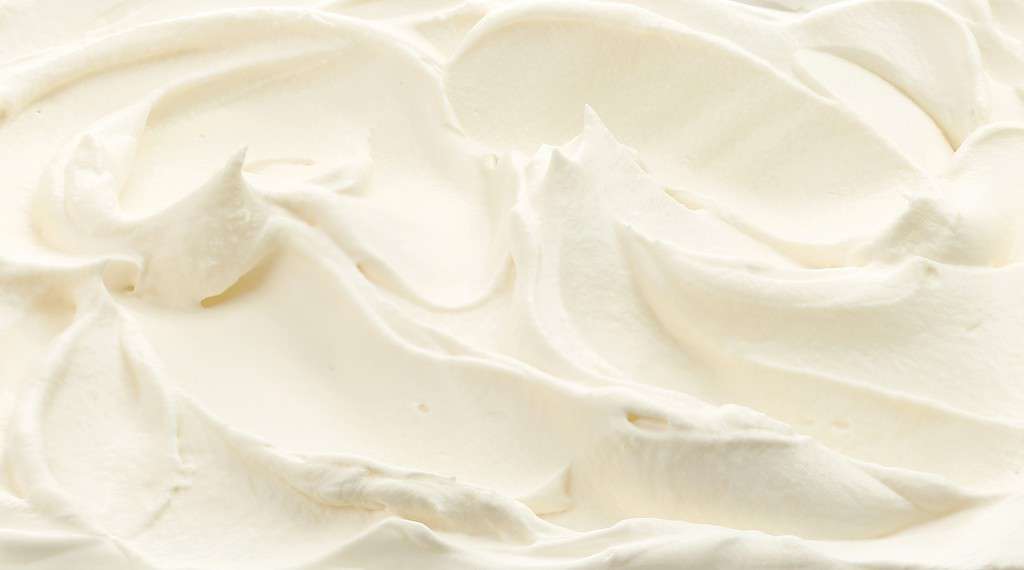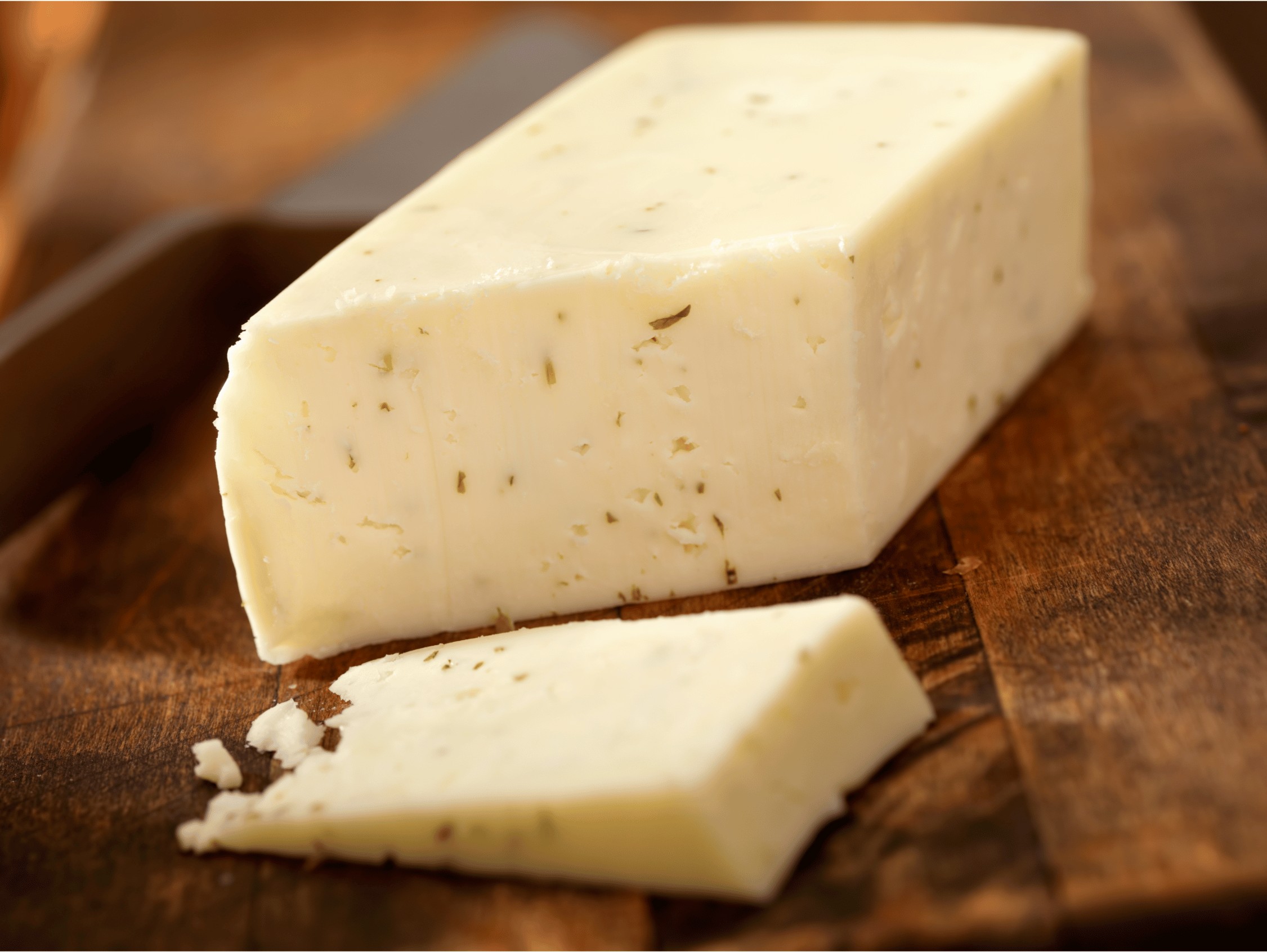Whipped cream cheese is a versatile and delightful variation of the traditional cream cheese spread. Adored for its light and airy texture, it has become a favorite for spreading on bagels, crackers, and fruits. By incorporating air into cream cheese, the texture becomes softer and more pliable, making it an excellent choice for a variety of dishes and recipes. While it may seem like an indulgence reserved for the store-bought aisle, making whipped cream cheese at home is surprisingly simple and requires just a few kitchen staples.

Understanding the foundation of whipped cream cheese starts with good-quality cream cheese, which should be rich, creamy, and without any additives. The key to achieving that perfect fluffiness lies in the blending process, where the cream cheese is beaten until it is silky and smooth. This step not only changes the texture but also makes it more spreadable. To enhance the flavor of your whipped cream cheese, you can incorporate different seasonings and ingredients, tailoring it to your personal taste or dietary preferences.
Key Takeaways
- Whipping cream cheese at home is easy and requires minimal ingredients.
- Proper beating technique results in a light and airy consistency.
- Whipped cream cheese is adaptable for flavor variations and personalized tastes.
Understanding Cream Cheese

Cream cheese is a soft, mild-tasting cheese with a smooth consistency. It’s a versatile ingredient often used in both sweet and savory dishes. We’ll explore the different types of cream cheese and their nutritional content, focusing on key nutrients and compositional differences.
Types of Cream Cheese
- Full-Fat Cream Cheese: This is the traditional cream cheese with a rich flavor due to its higher fat content.
- Reduced-Fat Cream Cheese: Contains less fat than its full-fat counterpart, resulting in fewer calories.
- Whipped Cream Cheese: Air is whipped into the cream cheese to make it lighter and spreadable.
- Flavored Cream Cheese: Comes in various flavors ranging from herbs to fruits, with additives for taste.
Nutritional Profile
In terms of nutrition, cream cheese offers a range of components that contribute to its profile:
- Calories: Full-fat cream cheese contains about 100 calories per ounce, while reduced-fat versions have fewer calories.
- Fat: Full-fat cream cheese has around 10 grams per ounce, including saturated, polyunsaturated, and monounsaturated fats.
- Protein: Offers around 2 grams of protein per ounce.
- Carbohydrates: Generally low in carbs, with about 1 gram per ounce.
- Calcium: Provides a modest amount of calcium, essential for bone health.
- Vitamins: It’s a good source of vitamin A; the exact amount can vary by product.
- Cholesterol: Contains about 30 milligrams of cholesterol per ounce.
- Sodium: Typically has between 80 to 100 milligrams of sodium per ounce.
- Potassium: Contains a small amount of potassium.
- Iron: Offers a trace amount of iron.
| Nutrient | Full-Fat (per oz) | Reduced-Fat (per oz) |
|---|---|---|
| Calories | 100 | Varies |
| Fat | 10g | Less than full-fat |
| Protein | 2g | 2g |
| Carbohydrates | 1g | 1g |
| Calcium | Modest Amount | Modest Amount |
| Vitamin A | Good Source | Good Source |
| Cholesterol | 30mg | Less than full-fat |
| Sodium | 80-100mg | 80-100mg |
| Potassium | Small Amount | Small Amount |
| Iron | Trace Amount | Trace Amount |
We can see from the table that while reduced-fat cream cheese may have a similar protein and carbohydrate content as its full-fat counterpart, the fat, calorie, and cholesterol content are typically lower. Understanding these nutritional nuances helps us to make informed choices depending on our dietary needs and preferences when incorporating cream cheese into our culinary creations.
Essential Ingredients

We need a few high-quality ingredients to make exquisite whipped cream cheese. The choice of cream and the variety of cream cheese used are crucial to the final texture and taste.
Selecting Quality Cream
For the base of our whipped cream cheese, heavy cream is essential. We’ll look for heavy cream that has a high fat content, typically around 36% to 40%, to ensure that it whips well and provides a rich, smooth texture. It’s important to use the freshest heavy cream available; a good way to check this is to confirm that the cream is well within its expiration date and has been properly refrigerated.
- Desired attributes of heavy cream:
- High fat content (36%-40%)
- Freshness (check expiration date)
- Proper storage (refrigeration)
Cream Cheese Varieties
The core ingredient, cream cheese, should be of premium quality and full-fat to achieve the perfect consistency and flavor. There are options for adding herbal or savory notes by incorporating ingredients like herbs, garlic, chives, dill, and onion powder. A plain base is versatile for both sweet and savory applications, so we should consider the intended use when selecting our cream cheese.
- Flavoring options (to taste):
- Herbs: chives, dill
- Spices: garlic (minced or powder), onion powder
- Sweeteners: sugar (if a sweet whipped cream cheese is desired)
Incorporate these elements with precision to tailor the whipped cream cheese to our specific preferences or recipes.
Tools and Equipment

Before we start, it’s crucial that we have the right tools at hand to make whipped cream cheese efficiently. A quality stand mixer or alternative mixing tools, precise measuring cups, and a sturdy mixing bowl are essential for this task.
Using a Stand Mixer
When we use a stand mixer, we make the process of whipping cream cheese both efficient and effortless. The paddle attachment is typically the best choice for cream cheese due to its ability to combine ingredients thoroughly at a consistent speed. Here’s what we need:
- Stand Mixer: A robust stand mixer with variable speed controls.
- Paddle Attachment: Essential for creaming the cheese smoothly.
- Measuring Cups: Ensures accurate ingredient quantities.
- Mixing Bowl: Preferably metal or glass that can be attached to the stand mixer.
For optimal results, start at a low speed and gradually increase as the cream cheese softens.
Alternative Mixing Tools
If a stand mixer isn’t available, we can still achieve excellent results with alternative tools. Each of these tools requires more manual effort but can be just as effective:
- Hand Mixer: Portable and less powerful; mix at medium speed for consistency.
- Food Processor: Works quickly, use short pulses to avoid overheating the cream cheese.
- Mixing Bowl: Should be large enough to prevent spillage while mixing.
Make sure the cream cheese is at room temperature before you begin, as this will make the mixing process smoother and prevent straining the motors of smaller devices. Always scrape the sides of the bowl periodically for an even texture.
Preparing the Cream Cheese
Before we begin whipping, it’s crucial to properly prepare the cream cheese, ensuring it’s at the right texture and consistency for a smooth and airy whipped cream cheese.
Softening Cream Cheese
Firstly, we need to soften the cream cheese to room temperature to guarantee that it beats nicely into a light and fluffy texture. To do this:
- Take the cream cheese out of the refrigerator at least 30 minutes before starting.
- Cut it into small cubes on a plate to speed up the softening process.
Combining Ingredients for Texture
Once the cream cheese has softened, it’s time to add other ingredients to achieve the perfect texture:
Measure and ready the following components based on your recipe’s proportions:
Ingredients Purpose Suggestion Cream Cheese Base 1 cup, at room temperature Heavy Cream To add airiness 1/4 cup, cold Confectioners’ Sugar For sweetness 2 tablespoons, sifted Use a hand mixer or a stand mixer fitted with the paddle attachment to beat the cream cheese on medium speed until it’s smooth.
Gradually add the heavy cream and confectioners’ sugar, and continue to whip until the mixture achieves a light, airy consistency.
Whipping Process
In this section, we focus on transforming cream cheese into a whipped delight, ensuring it reaches the peak of lightness and fluffiness.
Achieving the Ideal Consistency
Before embarking on the whipping process, it’s crucial that we have the cream cheese at room temperature. We will achieve the best results using either a stand mixer or a hand mixer, as they’re designed to incorporate air effectively. We’ll start by placing the cream cheese in the bowl and beat it on a medium speed until it becomes smooth.
Step 1: Begin by beating the cream cheese alone to eliminate any lumps, ensuring the base of our whipped cream cheese is perfectly smooth.
Step 2: Incrementally increase the speed of the mixer to high. Continue to beat until the texture becomes light and fluffy. This process should take approximately 3-5 minutes, but watch closely to avoid over-whipping.
During the process, stop the mixer a couple of times to scrape down the sides of the bowl with a spatula. This ensures all the cream cheese is evenly whipped and reaches that airy consistency we’re aiming for.
Remember, the key to perfect whipped cream cheese is all in the technique—gentle at first to smooth, then vigorous to introduce air and lightness.
Flavoring Your Whipped Cream Cheese

Injecting flavor into our whipped cream cheese enhances its versatility and appeal. We can adjust to any palate or occasion through sweet or savory additions.
Sweet Flavor Variations
For a sweet twist to our cream cheese, we recommend incorporating:
- Cinnamon: A pinch can significantly accentuate the cream cheese’s sweet profile.
- Honey: Drizzling honey will impart a natural sweetness and smooth texture.
- Maple Syrup: For a distinct flavor, maple syrup offers a rich and woodsy sweetness.
- Vanilla Extract: A few drops will infuse a classic, aromatic sweetness.
For easy reference:
| Ingredient | Suggested Quantity |
|---|---|
| Cinnamon | 1/2 teaspoon |
| Honey | 1 tablespoon |
| Maple Syrup | 1 tablespoon |
| Vanilla | 1/2 teaspoon |
Savory Flavor Additions
For those preferring a savory edge:
- Garlic Powder: Adds a robust flavor that pairs well with bagels and crackers.
- Smoked Salmon: Finely chopped and mixed in, it creates a rich, savory delicacy.
- Seasonings: Salt, pepper, or a blend of dried herbs can be tailored to complement any dish.
To incorporate these flavors:
| Ingredient | Suggested Quantity |
|---|---|
| Garlic Powder | 1/2 teaspoon |
| Smoked Salmon | 1/4 cup, chopped |
| Seasonings | To taste |
Each addition should be mixed thoroughly to ensure an even distribution of taste throughout the cream cheese. Our flavored whipped cream cheese can now elevate a variety of dishes, from morning bagels to elegant appetizers.
Serving and Usage
We find a variety of ways to bring out the rich, creamy texture of whipped cream cheese, making it a versatile addition to many dishes. Whether spread atop our favorite bakery items or incorporated into delightful recipes, the airy consistency enhances the overall experience.
Spreadable Applications
Whipped cream cheese excels as a spread due to its light and spreadable consistency. Here’s how we love to use it:
- Bagels: A classic pairing where we generously top a toasted or fresh bagel with a layer of whipped cream cheese.
- Toast: Transforming a simple piece of toast into a satisfying treat, we spread it thinly or thickly depending on our preference.
- Sandwiches: When making sandwiches, it serves as a creamy layer that adds moisture and flavor—we often choose it over mayonnaise.
Incorporation into Recipes
Whipped cream cheese isn’t just for spreading; it integrates smoothly into various recipes:
- Cream Cheese Frosting: We use it to create a lighter frosting for cakes and cupcakes; its whipped texture allows for an airy and smooth application.
- Desserts: Ideal for mousses, cheesecakes, and fruit dips, it blends easily without weighing down the dessert.
By keeping these applications in mind, we can elevate our dishes with the simple addition of whipped cream cheese.
Storing Whipped Cream Cheese
Proper storage is crucial for maintaining the freshness and extending the shelf life of whipped cream cheese. We’ll guide you through the best practices for refrigerating and freezing this dairy delight, ensuring it remains at peak quality for future use.
Refrigerating for Freshness
To retain the creamy texture and delicate flavor of whipped cream cheese, refrigeration is essential. We suggest placing the whipped cream cheese in an airtight container. This prevents moisture loss and protects it from absorbing any odors present in the fridge. Ideally, keep the whipped cream cheese at a constant temperature of 40°F (4°C), which is within the safe zone for dairy products.
- Duration: Whipped cream cheese can be refrigerated for up to two weeks.
- Location: Store on shelves closer to the cooling source, avoiding the door where temperature fluctuates.
Freezing for Longevity
Freezing whipped cream cheese can extend its shelf life considerably. However, it’s important to note that freezing may slightly alter the texture, making it slightly grainier once thawed. For best results, divide the cream cheese into usable portions before freezing.
- Pack the whipped cream cheese into an airtight container or a heavy-duty freezer bag.
- Label the container with the current date to monitor how long it has been stored.
- Temperature: Maintain the freezer at 0°F (-18°C) or lower.
- Defrosting: When ready to use, thaw the whipped cream cheese in the refrigerator overnight.
By following these storage methods, we ensure that our whipped cream cheese stays as fresh and flavorful as when it was first made.
Creative Uses and Ideas
Whipped cream cheese is a versatile spread that can transform the ordinary into the extraordinary with its light, fluffy texture and rich flavor. We’ll explore innovative ways to incorporate this delightful ingredient into various meals throughout the day.
Breakfast and Brunch Innovations
In the morning, we can take bagels to a new level with whipped cream cheese. Rather than the standard schmear, consider blending strawberry or cinnamon into the cream cheese for a sweet twist, creating strawberry cream cheese and cinnamon cream cheese variants. It’s not only about traditional bagels—sweet breads like banana or zucchini bread can be elevated with a dollop of whipped cream cheese.
Bagel Toppings:
- Strawberry Cream Cheese: Fresh strawberries + whipped cream cheese.
- Cinnamon Cream Cheese: Ground cinnamon + whipped cream cheese.
Sweet Bread Accompaniments:
- Pair with banana or zucchini bread for a creamy addition.
Desserts and Sweet Treats
Whipped cream cheese isn’t confined to breakfast; it’s an excellent base for desserts and sweet spreads. Its spreadable consistency makes it perfect for fruit dips. Combine with two ingredients like honey or cocoa powder to produce flavorful dips that pair wonderfully with fruits like apples or pears.
Fruit Dips:
- Mix with honey for a simple, sweet dip.
- Blend in cocoa powder for a chocolatey treat.
Two-Ingredient Treats:
- Whipped cream cheese + honey/cocoa powder.
Savory Snacks and Appetizers
Moving on to savory snacks and appetizers, our whipped cream cheese becomes an inventive component for dips and spreads. It complements veggies, chips, pretzels, and crackers, enhancing the taste and experience of our favorite snacks. With just a few added spices or herbs, we can create an array of dips suitable for any gathering or a quick, savory lunch.
Savory Dips:
- Herbs + whipped cream cheese for a herby veggie dip.
- Spices + whipped cream cheese for a bold chip or pretzel dip.
Snack Pairings:
- Ideal with veggies, chips, pretzels, and crackers for a satisfying crunch.
Health Considerations
When incorporating whipped cream cheese into our diets, we must consider its nutritional impact and how to balance it with our overall dietary needs. It’s important to be informed about the benefits as well as the contents of cream cheese to manage our health effectively.
Understanding Cream Cheese Health Benefits
Cream cheese offers certain nutritional benefits when consumed in moderation. It’s a source of protein which is essential for muscle repair and growth. A typical serving of cream cheese can contain about 2 grams of protein. Additionally, it provides a dose of calcium which is crucial for bone health.
- Protein: ~2g per serving
- Calcium: Beneficial for bones
Despite these positives, cream cheese is high in fat and calories, with a standard ounce containing around 10 grams of fat and 99 calories. It can also contribute a significant amount of cholesterol and sodium, which we need to monitor closely, particularly for those of us with specific health concerns such as hypertension or high cholesterol levels.
- Fat: ~10g per ounce
- Calories: ~99 per ounce
- Cholesterol: Can be high
- Sodium: Monitor intake
Balancing Cream Cheese in Your Diet
We should aim to balance our intake of cream cheese, recognizing its place in a varied diet. Because of its high-calorie and fat content, we ought to integrate it sparingly, treating it as an occasional indulgence or using reduced-fat versions when available. We also need to be aware that it may contain saturated fats, which are advisable to limit in our diets.
In terms of carbohydrates, cream cheese is relatively low, making it a suitable option for those of us following low-carb diets, but we must still consider the overall balance of macronutrients throughout the day.
- Reduced-Fat: Option for lower fat intake
- Saturated Fats: Limit intake
- Low-Carbohydrates: Suitable for low-carb diets
By being mindful of portion sizes and how often we include cream cheese in our meals, we can enjoy its creamy texture and taste without significantly impacting our dietary goals.
Tips and Tricks
When aiming for perfection in whipped cream cheese, remember that texture and flavor are paramount. We’ll guide you through the essentials to achieve optimal results with ease.
Achieving the Perfect Whipped Texture
To create a light and fluffy texture, ensure your cream cheese is at room temperature before beginning. This key step prevents clumps and facilitates smoother whipping. Use a stand mixer, hand mixer, or food processor with a whisk attachment for the best results.
- Pro tip 1: Begin on a lower speed to incorporate any added ingredients and prevent splashing.
- Pro tip 2: Gradually increase the speed to incorporate air, which is vital for that airy texture we’re after.
Flavor Enhancements
For an exquisite taste, consider experimenting with a variety of flavors. Here, we’ll discuss a few variations that can take your whipped cream cheese from good to great.
| Ingredient | Effect on Flavor |
|---|---|
| Vanilla Extract | Adds a sweet, aromatic depth |
| Fresh Herbs | Introduces a savory twist for more complex dishes |
| Citrus Zest | Imparts a fresh, tangy kick |
- Trick 1: Introduce flavorings slowly, taste testing as you go to prevent overpowering the cream cheese.
- Trick 2: Pair your flavor enhancements with the intended dish to create a harmonious taste experience.
Frequently Asked Questions
In this section, we address common queries related to the preparation of whipped cream cheese, whether by hand or with kitchen tools, and how to enhance its flavor and texture for various recipes.
What are the best techniques to whip cream cheese by hand?
To whip cream cheese by hand, we recommend allowing the cream cheese to reach room temperature for easier manipulation. Use a whisk and a sturdy bowl, vigorously whipping the cheese until it reaches a smooth and airy consistency.
Can you achieve fluffy cream cheese without using an electric mixer, and if so, how?
Yes, you can achieve fluffy cream cheese without an electric mixer by using a hand whisk or a sturdy fork. Ensure the cream cheese is at room temperature, and systematically work the cheese with the tool of choice until it is light and fluffy.
Could you provide some savory recipes that incorporate whipped cream cheese?
Certainly, we often incorporate whipped cream cheese into recipes like herbed cream cheese dips, stuffed mushrooms, and creamy whipped potato toppings for an added richness and smooth texture.
How can you add flavors like chives to create a seasoned whipped cream cheese?
To create a seasoned whipped cream cheese, finely chop the desired herbs—such as chives—and fold them into the whipped cream cheese until evenly distributed. This provides a burst of flavor ideal for spreads or dips.
What is the difference in texture and use between regular cream cheese and whipped cream cheese?
Whipped cream cheese is lighter and more spreadable due to the incorporation of air, making it ideal for spreads or frostings, whereas regular cream cheese has a denser texture, better suited for recipes requiring firmness and shape.
What are the proportions for substituting whipped cream cheese in recipes that call for regular cream cheese?
When substituting whipped for regular cream cheese, use a 1:1 ratio by volume for recipes where the texture isn’t critical. However, for baking, precise conversions can vary, so ensure to adjust moisture levels accordingly to maintain the integrity of the recipe.






